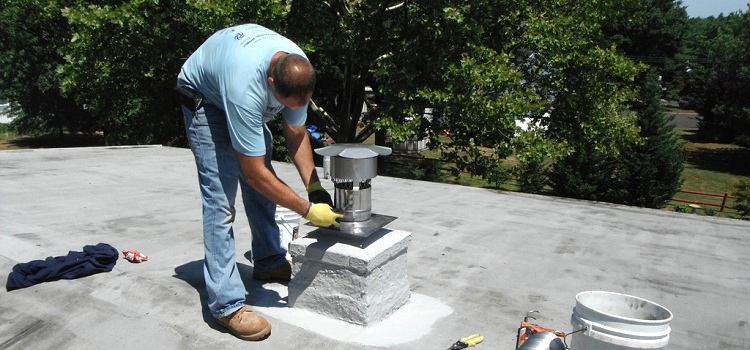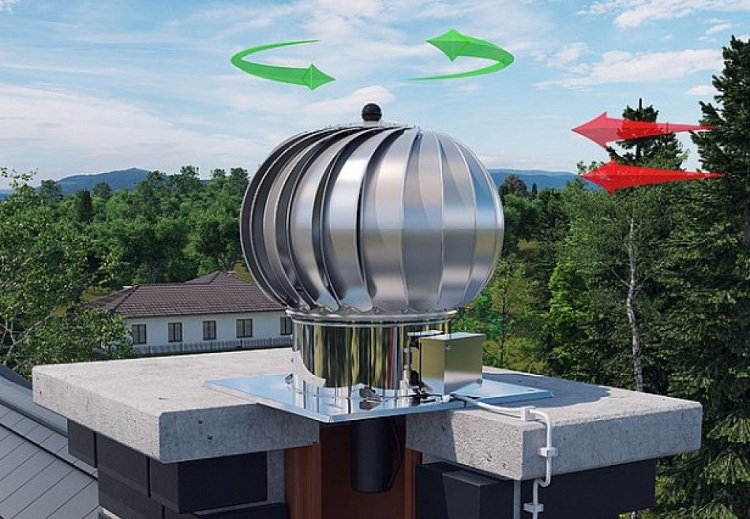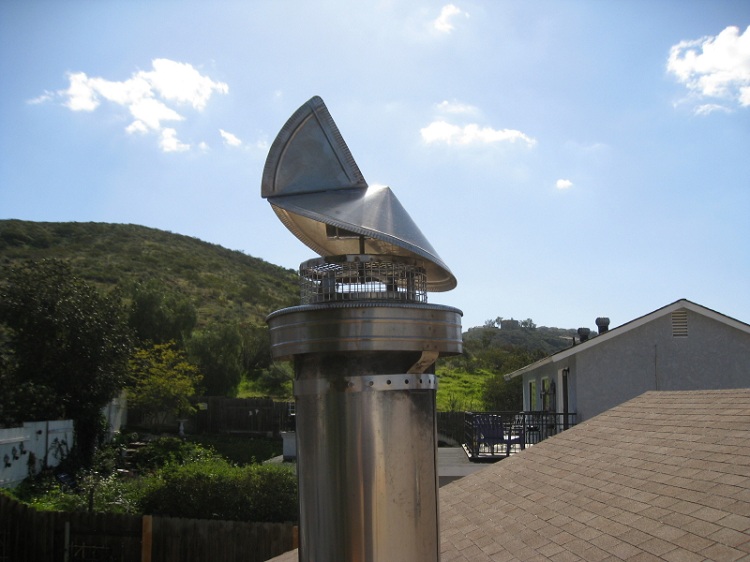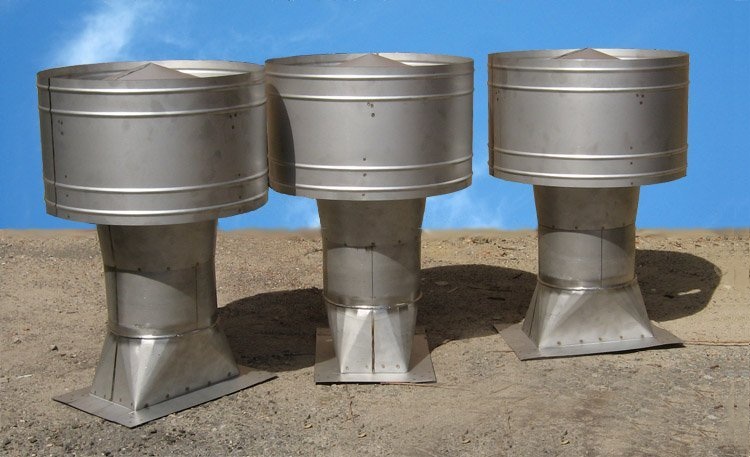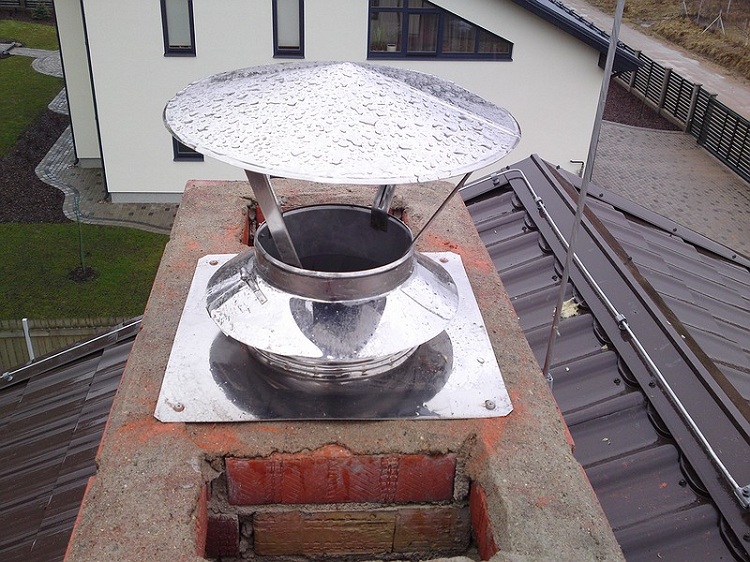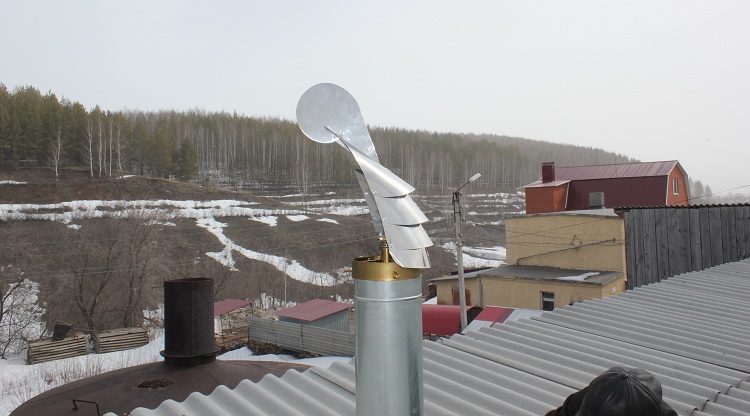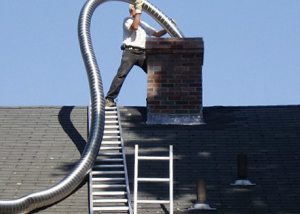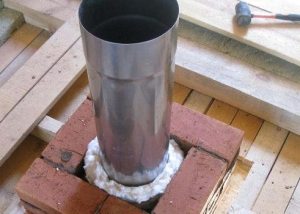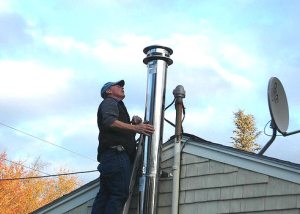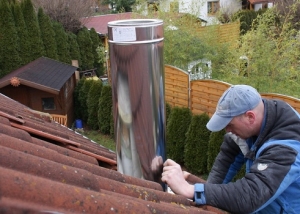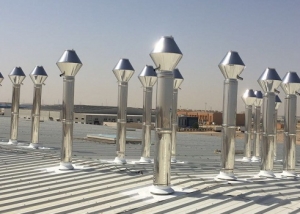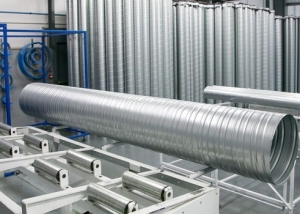A chimney deflector is a device that is used to enhance traction in a chimney structure. In addition, it performs a protective function, preventing the penetration of precipitation and various debris into the pipe. Today, there are several popular options for this device, which not only cope well with their functions, but can also serve as an element of the decor of the roof.
Content
Why do you need deflectors?
Everyone can ask a question: what are deflectors for? You can answer this question by looking at the design and basic functions that this device performs. The main feature of the chimney, due to which smoke is removed from the system, is draft. Creating the desired traction by means of a pressure differential contributes to the complete removal of combustion products outside the house. In order for the draft to be sufficient, the following parameters are calculated: the diameter of the pipes in the structure, the type of their section, the material of manufacture, pipe height above the roof etc. Also, an important factor is the general form of the structure.
In strong winds, air can enter the pipe lumen, thereby interfering with the normal exhaust of smoke from the system. In some cases, this can lead to the formation of back draft and smoke in the heated room. The deflector not only protects the chimney from the wind, but also uses its strength to increase traction.
Principle of Operation and Design
The principle of operation of this device is based on the laws of physics. The movement of gas along a narrowing pipe is accompanied by its acceleration, however, the pressure acting on the walls of the structure decreases and a discharged zone appears. The chimney deflector allows air to pass through the narrowing channel of the structure, resulting in a discharged area. It is formed near the mouth of the chimney structure. Gases that are removed from the chimney are sucked into the discharged zone and, thanks to the draft reinforced by the wind, are vented out.
The simplest devices can add up to 20% of the force to the traction. For heating structures, this is a very important advantage, as it contributes to the complete burnout of solid fuel, which increases the efficiency of the system as a whole. The design equipped with this device is more efficient, therefore, these devices are very popular today.
The chimney deflector consists of the following structural elements:
- top cylinder;
- lower cylinder;
- a nozzle included in the lower cylinder;
- cap;
- clamps (brackets).
In some cases, the design of the device does not include the upper cylinder, since it is an optional element. Then the design will be like this:
- bottom cylinder, which is mounted on the chimney;
- diffuser (part dissecting the air flow);
- cap (reverse and direct).
An auxiliary function of the device is to protect the chimney from atmospheric precipitation. Two factors provide protection from snow and rain: the body of the product and strong traction.
Types of Smoke Deflectors
To date, the range of these devices is represented by several products that differ in design. Consider the most popular models:
- ventilation TsAGI;
- dish-shaped;
- spherical "Volper";
- Grigorovich's device;
- H-shaped.
Any of the above chimney deflectors has excellent performance. Different models may vary in size and sensitivity to wind flows.
Note! Such products have one significant drawback - during a period of calm, all of them resist the natural draft of the structure.
There are other devices that differ from the classic models in terms of design:
- rotating deflector;
- deflector "weather vane".
The principle of operation of such models does not differ from the classical ones. At the heart of their work are the same laws of physics.
These devices are made of different metals. The most common materials:
- galvanized steel;
- stainless steel;
- copper.
All of the above materials have one common property - resistance to the harmful effects of corrosion. This is a very important quality, because the device is mounted outside the house, so it is affected by various destructive environmental factors.
In addition, there are devices that are mounted in ventilation structures (plastic ventilation deflector). Plastic deflectors in ventilation structures perform essentially the same functions.
Browse Popular Models
Let's consider in more detail the most common models of deflectors.
Air vent Tsagi
This model is considered the most popular. Such a device has a larger diameter than the chimney. Air flows flow around the device from all sides, as a result of which high pressure areas form on the sides, and a vacuum increases in the rear and front zones, which increases traction.
The device of such a product eliminates the protection of the chimney channel from atmospheric precipitation. Therefore, after installing this device, additional installation is required. protective cap.
Plate
A simple model that provides a fairly efficient system and high traction. The two main elements of the device form a protective visor that prevents snow and rain from entering the chimney duct.
The lower part of the visor is closed by a cap, which is directed towards the chimney. This design allows the device to cope with its tasks. Airflow can enter such a deflector from any direction and, being between the cones that form a narrowed channel, cause a vacuum.
Spherical "Volper"
This model has an almost identical device with a TsAGI deflector. However, there is one difference - the visor, which protects the chimney channel from precipitation and debris, is located above the diffuser.
Grigorovich deflector
A very popular deflector model that increases traction in chimney and ventilation structures. Such a deflector is easy to assemble with your own hands. The design of this device includes such components: a lower cylinder with two nozzles, an upper cylinder, a cone and two brackets.
The smoke coming from the pipe is in the narrowed channel of the diffuser, whereby a vacuum occurs. To assemble such a device, as a rule, a tin sheet or a plate of galvanized steel is used.
N-shaped
This model is used mainly in manufacturing plants or boiler houses, which have great power. Installation of the H-shaped deflector is as follows: a pipe of the same size is fixed at the mouth of the pipe. In the central part of the nozzle there is a special insert, due to which the device is tightly connected to the chimney. Two more tubes are fixed to the transverse pipe on the right and left, as a result of which a device resembling the letter “H” is formed.
Such a construction does not require a protective visor, since the mouth of the chimney is already protected by horizontal parts. The H-shaped deflector enhances traction in any direction of air flow.
Rotating
Such a device rotates in only one direction. Circular motion provides additional fixture efficiency. In addition, this model protects the pipe from precipitation and debris. Often used for gas fired boilers.
Important! It is worth considering one minus of the rotating device - the deflector rotates due to air flows, so it does not function in calm. When icing, a rotating exhaust vent deflector is also useless.
Weather vane deflector
This model includes a rotating body. This device includes the following elements: weather vane, visors, bearing assembly. The rotation of the device is due to the force of the wind acting on the wind vane. Chimney deflector type weather vane works on the principle of ship sail.
Features of the device are as follows: air flows between the visors, so that the air becomes rarefied. This model allows you to strengthen the draft in the chimney, to eliminate reverse draft and the formation of sparks.
DIY chimney deflector
Each fixture has unique dimensions, which are determined depending on the design of the chimney. The height of the deflector depends on the internal diameter of the chimney, the data are presented in table No. 1.
Table 1
| The inner diameter of the pipe, mm | Deflector height, mm |
| 500 | 600 |
| 400 | 480 |
| 200 | 240 |
| 140 | 168 |
| 120 | 144 |
The width of the diffuser also depends on the internal diameter of the chimney. These important points should be considered when assembling this device with your own hands, and you can find out the ratio using table No. 2.
table 2
| The inner diameter of the pipe, mm | Diffuser width mm |
| 500 | 1000 |
| 400 | 800 |
| 200 | 400 |
| 140 | 280 |
| 120 | 240 |
For the manufacture of the device yourself, you must follow this sequence of actions:
- Before starting the assembly of the device, it is necessary to take measurements from the chimney pipe and draw up a preliminary drawing of the device.
- Next, prepare the layouts of all parts of the deflector. They can be cut out of cardboard.
- Dimensions of models are transferred to metal sheets.
- At the fourth stage, parts for the future device are cut out of metal billets.
- Docking of individual elements into a single design. You can connect parts of a homemade device with bolts or welding.
- Clamps for the hood (brackets) are made of metal strips.
- The conical part is mounted on the cap of the device.
Mounting a classic deflector
The exhaust pipe baffle is installed quite simply. Installation of this device can be performed by everyone who does not have special building knowledge.However, you should carefully study the stages of this event.
First, you need to prepare the necessary tools and materials for installing the deflector:
- the device itself;
- tools for fixing bolts (screwdriver or screwdriver);
Helpful information! In addition, for the installation of the device you will need two stairs. The first staircase is for climbing the roof, and the second - for the ridge.
The installation itself is very simple:
- At the mouth of the chimney, the lower part of the device is fixed with bolts.
- With the help of clamps, the upper part (diffuser) is attached to the lower part.
- At the end it is necessary to mount a protective peak. The visor is fixed to the brackets.
The deflector is a useful device that affects the draft in the chimney and the operation of the heating system. Installing it is easy, but it is important to choose the right model and size of the device.
